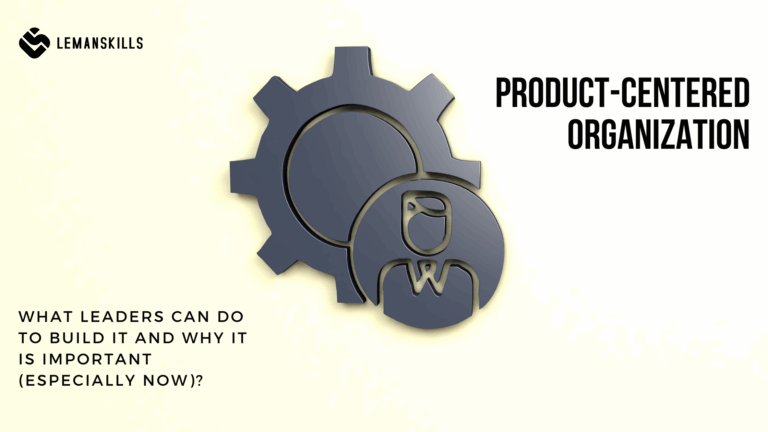A couple weeks ago, my dear friend told me that she sees that there is one common thing in my Instagram posts and articles that I create: a subject of wasting time. And it dawned on me that it is so true. One of the most things that I hate the most on this planet is wasted time AND the excuse that a lot of people use that they don’t have time. To do something with their lives, their careers, their development. To read. Or to give their parents a 5-minute call.
We are so busy that we forget what’s really important. We focus on wrong things, instead of spend energy on those that actually matter.
The question is, what you can say “no” to, to get your time back?
When we say “I don’t have time” excuse at work
Do you ever feel that you spend a really busy day (or week), you participated in several different meetings, answered countless e-mails and other messages, covered some tasks from your to-do list, but at the end of the day (or week) you can’t tell that you have actually done something? That you’ve created any value?
It’s happening when people are “busy” and not “productive”. We can be busy and not create anything important. And it really doesn’t matter if we work in a creative space or not. Each job should have a space where we can create a value, something that really matters. If it’s not your current job, maybe it’s time for you to think about reskilling/upskilling yourself and find another place where you’ll have this opportunity.
“I don’t have time” excuse at work is when we are busy, often spending time on little things, procrastinating bigger ones, those that can actually brings value to other people in the organization, clients, the company itself, the environment. We think that we covered so much, because we were busy the whole day, but did we really?
The solution for that is to have a structure around your workday. Make a list of the tasks that you want to cover within the day (or a week). Divide them into two categories: big ones and small ones. Choose 1-2 big ones and 3-4 small ones from the list. Make baby steps – if you choose too many, you are going to procrastinate the whole thing, and nothing will get done. Always start with big ones. It’ll give you more motivation to keep going when you’ll see actual results of your work. Then move to the next one.
Don’t check your e-mail inbox every minute. Turn off notifications, check it only 2-3 times a day. Create a space in your calendar for “deep work”, let’s say the first 2 hours of your workday. It will allow you to get things done, before meetings, training sessions, calls, 1:1s, e-mails etc. You can find more about this approach in a book “Deep Work” by Cal Newport (I wrote about slots for deep work HERE as well).
Which tasks, e-mails, asks from other people you can say “no” to, to get some of your work time back?
When we say “I don’t have time” excuse in professional development
Working in learning & development area, or in HR in overall for years now, showed me that when people get stuck with their careers, they use the I-don’t-have-time excuse a lot. They have no opportunities to grow in the organization. There is nothing new for them to learn. They don’t know what to do with themselves. And when I ask the question: “What you actually want to do with your career?” the most common answer is: “Oh, I don’t know. Develop me.”. It’s amazing how people’s brain works, and how often we just let some of our areas of life go, because we just don’t want to take any uncomfortable action, we just making excuse after excuse. We live in a bored zone or comfort zone for years, keep saying that we don’t have time to read, to take a course, to start a business, to listen to a podcast. That’s crazy, taking into consideration how many hours per week we spend on Netflix or other platform watching movies and series. Don’t get me wrong, I watch things too and I love it. But I am mindful about my time, and I use it wisely, taking care of a balance between each area in my life.
Create a structure around your professional development. What kind of healthy habits for your brain you would like to build? Make a list. Choose an app that’s going to support you in building those habits (I use Habitica at the moment and I love it). Make some of them daily, some of them weekly habits. Make it a challenge, but not too much – remember that when we want to build habits, we need to take baby steps to convince our brain that it’s worth the effort.
Check in settings how much time do you spend daily using your phone. And how much of it you can cut and spend it for reading for instance?
Which bad habits, ways of spending (or wasting) your day you can say “no” to, to get some of your after (or before) work time back?
When we say “I don’t have time” excuse in health
When we say “I don’t have time” excuse to the things that are important to keep us in a good health and shape as long as it’s possible, we wake up one day and it’s too late. We have cardiovascular issues, high blood pressure or high cholesterol level, diabetes, obesity – you name it. We can’t climb couple of steps without a pause or two somewhere in between. And we are only in our 30s or 40s.
Sitting all day every day is not helpful. It wasn’t even an issue for our parents, and for us it is a huge one. And it influences not only our physical health, but also our mental well-being. When Covid hit, it started to be even a bigger issue, since we spent all of our time at homes, moving back and forth from living room to the kitchen. And for many of us, it stayed that way.
Is 15 minutes for a walk a lot? Is it something really that hard we can’t do it? Are 2 pushups after using the bathroom something that we can’t do? You don’t necessarily need to start running 10km per day (you can if you want of course), it’s all about small things. It’s about getting up and going to sleep approximately at the same time every day. It’s about drinking water. It’s about medical check-up once a year (prevention first).
What can you say “no” to, to get some of your time back to take care of your health better?
When we say “I don’t have time” excuse in relations
We are all social creatures. Regardless of our place on introvert-extravert axis, we need people more or less in our lives. To talk to them, to take some energy and charge our batteries, no share some insights or ask for an advice and wisdom. When we say “I don’t have time” for people who are close to our hearts, we ruin everything what’s valuable. If you “don’t have time” to make your parents a 5-minute call (of course if they are important to you on any level in your level), I say you should think about your priorities.
If you “don’t have time” excuse to meet your best friend for a coffee, because you are sooooo busy, I say you should think about your priorities. If you finish your work and then you spend the rest of your day playing games or scrolling social media on your phone, instead of having quality time with your partner or your kids, I say you should think about your priorities.
We all need to reset, recharge batteries, especially when we have really demanding jobs. But what we really need to think trough is balance between each area in our live, so we focus on what really matters, instead of focusing on everything.
What you can say “no” to, to get some time back to spend it with people who you really love?
The bottom line
“I don’t have time” is an easy excuse. And it’s easy not only because it’s not hard to say, but also because it’s socially acceptable – we are all busy nowadays, right? We seem to think that the more we are busy, the more successful or valuable we are. And it’s so not true.
Stop using “I don’t have time” excuse. Think about the most important things in your life, focus on them. Cut everything else. Start saying “no” to things, set your boundaries to protect your time and those who you actually care about. It’s not rude or narcissistic. It’s self-care.
Start today.




